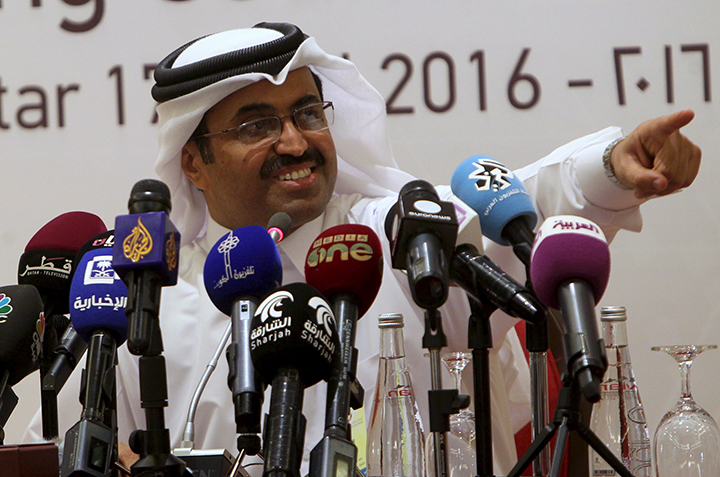 The Organization of the Petroleum Exporting Countries and Russia will only take collective action to reduce their oil production if prices drop to a level at which they can no longer make a profit. That price would be around $25 per barrel.
The Organization of the Petroleum Exporting Countries and Russia will only take collective action to reduce their oil production if prices drop to a level at which they can no longer make a profit. That price would be around $25 per barrel.
OPEC members and Russia failed to reach an agreement on cutting production at a summit in Doha on April 17. Oil prices slipped on the news. US oil prices dropped to $38.6 per barrel. The price of Brent crude dropped $1.80 hitting $41.28 per barrel.
The market is now eyeing the next OPEC meeting, scheduled for June, in the hope that it would produce a decision that would strengthen oil prices.
There are several factors that must be considered to gain a better understanding of the realities of the effort in Doha and the possible outcome of the next OPEC meeting.
- The oil-freeze talks are primarily focused on preventing an increase in Iran’s oil production by the end of 2016.
- Iran will not agree to freeze its oil production until it reaches its pre-2012 levels.
- Russia and Saudi Arabia increased their production to the maximum capacity in January when international sanctions on Iran’s oil export started to unwind as a result of the nuclear deal. Neither Saudi Arabia nor Russia can significantly increase their production by the end of 2016.
- Low oil prices hurt all producers, particularly those that are oil-dependent economies. Iranian officials, however, understand that if they freeze production at their January level (which is the amount that Iran was producing while under sanctions and one million barrels per day below its production capacity) they would only lose their market share to other producers and prices wouldn’t increase significantly.
- Iran is the only country among both the OPEC and non-OPEC oil producers that has the capability to significantly increase its production at current oil prices and by the end of 2016.
- Iranian officials have, on many occasions, said that they would support a decision to freeze oil production but are not going to sign any agreement that prevents Iran from increasing its production to its pre-2012 levels.
- As a result of sanctions imposed on Iran’s oil exports in 2012, Iran has reduced production by almost around one million barrels per day.
- Iran is technically capable of increasing its crude oil production totaling about 500,000 to 700,000 barrels per day by end of 2016 or mid-2017. However, this increase will be gradual and depends on Iran’s ability to expand its market share.
- Iran, by not sending any representative to the Doha meeting, sent a strong message to the market that it is determined to regain its pre-2012 production level. Hence, any effort to stabilize the market and prices should be made by those countries that have raised production significantly over the past year (mainly Russia and Saudi Arabia).
If oil prices stay at the current range or around $30/barrel it would be unreasonable to expect a significant outcome from the OPEC meeting in June. The average oil production cost in Iran is about $9 per barrel, in Saudi Arabia it is $8 per barrel, and in Russia about $20 per barrel. Even though most of the major oil producers are oil-dependent economies and have lost significant amount of cash due to low oil prices, giving up their market share to other producers (conventional or unconventional) during this glut in the oil market isn’t their priority.
Sara Vakhshouri is a Nonresident Senior Fellow at the Atlantic Council’s Global Energy Center. She is also President of SVB Energy International.
Image: Qatar’s Energy Minister, Mohammed Bin Saleh al-Sada, speaks to journalists following a meeting between Organization of the Petroleum Exporting Countries (OPEC) and non-OPEC oil producers in Doha, Qatar, on April 17. (Reuters/Ibraheem Al Omari)

